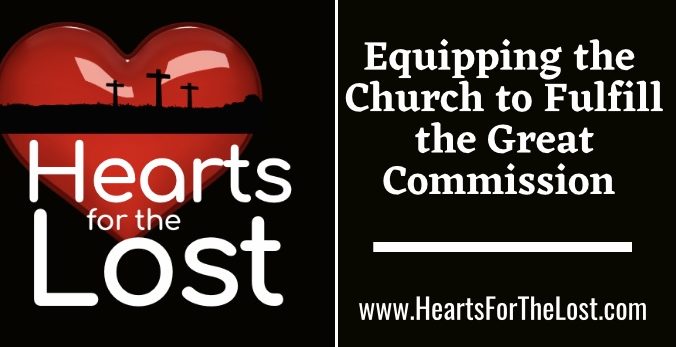An Attempted Explanation
During one of our Bible lessons around the supper table I was trying to convey the meaning of the atonement to my girls. To help convey this idea to my six and ten year olds, I used an analogy to illustrate it. I began to tell a story of two young boys who got into an argument with each other. To mend the relationship that had been broken between the boys another came in and acted as a mediator to reconcile them to each other. This was to picture the work of Christ in the atonement. However, a few days later I realized I had much more work to do when, while reviewing the lesson, I asked my youngest daughter what a mediator is. Her reply…someone who breaks up fights.
Of course my attempt to convey the depth of the atonement did not have the affect I had hoped. But at least the illustration had stuck. The doctrine of the atonement is full of depth and wonder, but we tend to mediate on it in very shallow ways. There is much more to the glorious labor of Christ beyond John 3:16. And it has major implications that relate to and shape our view of doctrines like original sin, the nature of man, and our worship of God. Therefore we will spend some time on this subject outlining its parts and implications.
What is the Atonement?
The atonement can be summed up as the act by which God restores a relationship of harmony and unity between Himself and human beings. [1] This restoration is necessary because the natural relationship between God and man, that was perfect at creation, has since been shattered. This was initially severed in the garden in Eden when Adam transgressed God by eating the forbidden fruit. This is important because Adam, acting as our federal head (as our representative) violated God’s commands; aligning himself with the serpent. This is what we refer to as original sin (Romans 5:8). This act affected man’s relationship with God and also the entire human race; even of those who had yet to be born. This type of representative act can see be seen in governments today. Every time we complain about burdensome taxes we can thank our representatives in Washington. Their actions affect all the people they represent. Likewise Adam’s actions affected the human race of whom he represented.
In addition to having lost our original relationship we enjoyed with God in the garden, we also have broken this through our personal sin. (Col 1:21) The effect of this sin on our being is so deep that it penetrates our very nature. This condition is no better summed up than in Romans 3:9-18 where Paul explains that, “all have turned aside; together becoming worthless; no one does good, not even one.” The seriousness of this condition has left us alienated from God. In fact, not only does the scripture say that no one seeks after God, but that we are hostile towards him in our minds and actions. With every passing day we continually perform evil deeds storing up punishment for ourselves on the day of judgement.
If this news was not bad enough, it gets worse because we find ourselves unable to restore this relationship. This is because no one is worthy of this relationship. Solomon wrote in Ecclesiastics 7:20, “There is not a righteous man on earth who does good and never sins.” Romans 3:23 says, “All have fallen short of the glory of God.” No one can ever say they have been able to purge sin from their own life through self-reform (Proverbs 20:9).
A God-Centered View of the Atonement
It is with this background that we now should view the atonement. Before the earth was formed God set this plan into motion; knowing the outcome of mankind without this means of grace (1 Peter 1:19). The restoration of the relationship between man and God was foreshadowed in the past in the sacrificial system of the Old Covenant. This system in part focused man on the divide between the nature of man and the holiness of God. The division of clean and unclean, the separation of the holy of holies and the other courts of the tabernacle and later the temple, to the cleansing rituals of the priest all point to this reality. It also taught us of the price which sin cost in seeing the slaughter of lambs, goats, and bulls. This system was brought to a close when ultimately fulfilled in the perfect lamb: Jesus Christ (1 Peter 1:19) and his sacrifice for sin upon the cross. Christ became the ransom for many (Mark 10:45). He was an offering and sacrifice to God (Eph 5P2).
A Redeemed People
This was all to accomplish salvation for all those who would believe and receive the benefits of the atonement (Romans 3:22). “In other words, the death of Christ was necessary to vindicate the righteousness of God in justifying the ungodly by faith. It would be unrighteous to forgive sinner as though their sin were insignificant, when in fact it is an infinite insult against the value of God’s glory. Therefore Jesus bears the curse, which was due to our sin, so that we can be justified and the righteousness of God can be vindicated.”[2] The atonement is a picture of a righteous and holy God, redeeming an ungodly and evil people. And what was the price of this redemption? It was the death of God’s son, the Christ, who paid our penalty on the cross. As Romans 5:8 says, “God demonstrated is love towards us, that while we were yet sinners, Christ died for us.” Because of this we can have a clean slate. All our sins can be washed away by Christ. We have only to fix our eyes on Him (Hebrew 12:1-3) and He will grant us repentance and faith leading to eternal life. What a glorious gospel this is!
[1] Compact Bible Dictionary; Youngblood and Harrison
[2] http://www.monergism.com/thethreshold/articles/piper/piper_atonement.html

